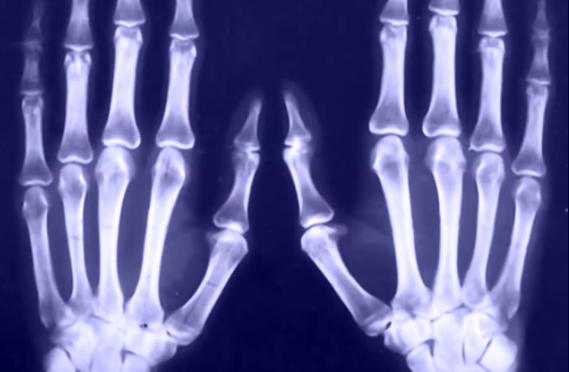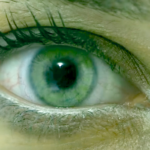Marfan syndrome is a disorder associated with changes in genes and it affects the connective tissue of an individual’s body. The connective tissue is responsible for supporting and anchoring cells, organs, and tissue together in the body and it is found everywhere. Connective tissue plays a role in growth and development of an individual. Marfan syndrome mostly affects parts of the body like the blood vessels, eyes, heart, and the skeleton. People having the disorder tend to be tall and thin with legs, toes, arms, and fingers that are disproportionately long.
The disorder may cause mild to severe damage, and it can be life-threatening if it affects the aorta or the large blood vessel carrying blood from the heart to other parts of a person’s body. Treatment may include use of medication to help lower blood pressures so that the aorta is not strained. Preventive surgery may be required to repair the aorta. Marfan syndrome affects only 1 in 5,000 people meaning it is a rare disorder. It has no cure, however, having comprehensive therapy can improve the quality of life a person leads. When a person receives diagnosis and timely treatment, he or she may have the same life expectancy as just a normal person.
Causes of Marfan Syndrome – How is it inherited?
The disorder is passed down in families meaning it is inherited but it can also occur randomly if there is faulty gene within the egg or sperm. A parent who has Marfan syndrome has a 50 percent likelihood of passing it to his or her child. It is important to know that about 25 percent of individuals with Marfan syndrome do not have parents with the disorder. So, there is spontaneous mutation happening in the genes of the patient who doesn’t have parents with the disorder.
Marfan syndrome is carried by the gene known as FBN1. It is this gene that provides Fibrillin-1, a kind of protein responsible for providing the strength and elasticity of connective tissue. When a person’s connective tissue lacks elasticity and strength, it makes it difficult for one to move and flex the body. The faulty gene prevents the production of Fibrillin-1 protein but at the same time increases cytokine protein that may contribute to inflammation as well as scarring.
Symptoms
Symptoms associated with Marfan syndrome may vary between people considering that the disorder affects various parts of a person’s body. Many people having Marfan syndrome have a particular physical build. The patient’s aorta tears and widens. The symptoms may show in cardiovascular system, eyes, and the skeleton. Sometimes, the symptoms are just mild and often found in certain body parts. At other times, the symptoms are severe and show in several body parts. As age increases, the symptoms tend to become worse. The symptoms may not present until sometimes later in life.
In the skeletal system, symptoms include:
- Long, narrow face
- Stooped shoulders
- Extremely flexible joints
- Long, slender toes or fingers, or both
- Small bottom jaw leading to speech disorders
- Protruding or caving of the breastbone or sternum
- Flat feet
- Pain in muscles, joints, and bones
- Stretch marks present on the skin because of overweight or pregnancy
- High palate causing speech disorders
- Slim body that is tall than normal height
- Overcrowded teeth
Having long limbs means that the individual’s arm span tends to appear longer than the height. A person with Marfan syndrome may have increased risk of having scoliosis or spine curvature, dural ectasia, spondylolisthesis. Dural ectasia involves the dural sac whereby it widens or bulges. Dural sac surrounds the spinal cord.
If Marfan syndrome presents with symptoms showing in the eyes, the individual may have:
- Astigmatism
- Nearsightedness
- Detached retina
- Dislocated lens
- Early onset of cataracts or glaucoma
If Marfan syndrome has symptoms showing in the cardiovascular system, a person may experience:
- Palpitations
- Shortness of breath
- Fatigue
- Dilated aorta
- Prolapsing heart valves as well as the aorta
- Angina presenting with chest pain that radiates to the shoulders, arm, or back
- Aortic aneurysm
Marfan Syndrome – Pictures
Treatment of Marfan Syndrome
While there isn’t cure for the disorder, getting treatment helps to manage and relieve symptoms while also preventing complications from arising. A personalized treatment regime is developed by a doctor depending on the body systems and parts affected by Marfan syndrome.
Close monitoring and regular check-ups are essential to find out how the patient is progressing. Eye exams and echocardiography are performed to see if there are vision and heart problems. In case of heart problems, a pediatric cardiologist will provide treatment. Treatment may include:
Beta blockers: These medicines help to ease the work that the heart performs. Sometimes, a child may require dose adjustments as he or she grows, probably a higher dose.
Surgery: A patient may need surgery to repair damaged aorta or heart valves. A heart transplant may be an option in severe cases. Prompt surgical treatment helps prevent complications like aortic dissection in which there is a serious tear or puncture occurring on the wall of the aorta.
If joint and bone problems are identified, an orthopedist offers treatment that may include special training or even surgery. Braces may be used in case of teeth problems.
Where eye problems are experienced, an ophthalmologist can provide treatment that includes use of medicine or even surgery.
Marfan Syndrome – Life Expectancy
The life expectancy for Marfan Syndrome may vary depending on the severity of symptoms, the time of diagnosis, the treatment offered, and changes in lifestyle. With proper diagnosis and appropriate, timely treatment or surgical intervention and management, a person can survive a normal life span, probably up to 70 years.
If cardiac complications like dissection, rupture, and aortic dilatation are experienced in patients, it can reduce the life expectancy. This means that when such complications occurs, there is poor survival. In one study involving 257 patients having Marfan syndrome that manifested with similar complications, the mean age at time of death among 72 patients was cited to be 32 years. A majority of the deaths meaning 80 percent were as a result of aortic dilatation and the associated complications while cardiac problems results in 52 deaths of the 56 deaths that had a known cause.
Most of the deaths among patients with Marfan syndrome are related to cardiovascular complications. In another study that examined how the lifespan among patients with Marfan syndrome has changed over the decades, it showed impressive results. The data was reported from 1972 to 1993, and it involved 417 patients picked from 4 referral centers. These patients had been diagnosed with Marfan syndrome and offered treatment. It was revealed 47 patients out of 417 patients died. In the findings, it was established that, in time of death, the patients had a mean age of 41 in 1993 compared to mean age of 32 recorded in 1972. These findings show that there has been improved survival.
In summary, the life expectancy among patients having Marfan syndrome seem to have increased at least by 25 percent since 1972. The reason for the improved life expectancy may be due to improvement of the number of years populations live, advancements in treatment including use of cardiovascular surgery, and enhanced frequency of diagnosis meaning the syndrome is caught before its symptoms have advanced. Use of medical therapy such as beta blockers is another reason the survival period may be increasing.





